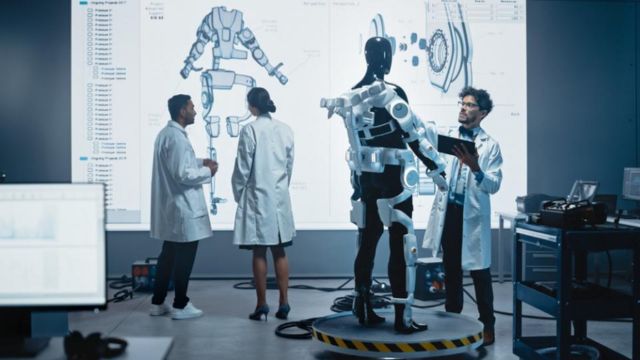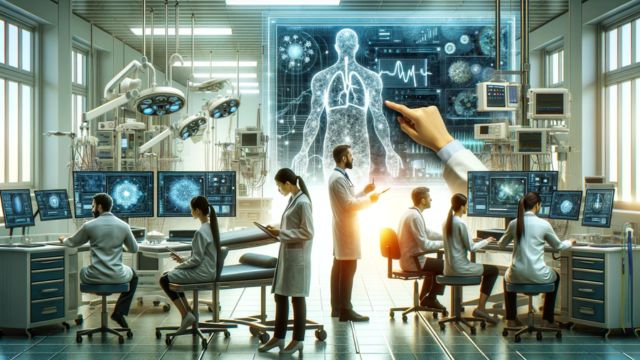Design, maintenance, and safe application of medical technologies depend on the activities of clinical engineers and biomedical engineers in healthcare environments. Although they concentrate on separate facets of healthcare systems, each of these domains seek to enhance patient care by means of advanced technology. Although they have different roles, delivering high-quality healthcare services depends on the cooperation of biomedical engineers and clinical engineers. The value of this cooperation will be discussed in this paper together with how it closes the distance between engineering solutions and clinical practice.
Understanding the Roles of Clinical Engineers and Biomedical Engineers
One should first know what each field of work involves before exploring the cooperation between clinical engineers and biomedical engineers.
- Clinical Engineers are healthcare professionals responsible for managing, maintaining, and troubleshooting medical equipment and devices within clinical environments. They work closely with healthcare providers to ensure that the equipment functions properly, meets regulatory standards, and is safe for patient use. Clinical engineers are typically involved in the selection, installation, maintenance, and testing of medical devices, as well as providing training for healthcare staff on how to use these devices.
- Biomedical Engineers, on the other hand, are engineers who specialize in the application of engineering principles to the medical field. They design and develop new medical devices, systems, and equipment. Biomedical engineers are responsible for creating innovative solutions to improve healthcare outcomes, from prosthetics to diagnostic tools. They often work in research and development, designing the next generation of medical technologies.
The Need for Collaboration
Biomedical engineers are concentrated on the design and invention of new medical technology whereas clinical engineers concentrate on the pragmatic features of medical equipment use and maintenance. The cooperation between these two disciplines is essential to guarantee that new technologies are practical, safe, and user-friendly in actual clinical environments.
- Ensuring Technology Meets Clinical Needs:
One of the main advantages of cooperation is making sure that biomedical engineers create tools suited for the practical difficulties of healthcare surroundings. During the design process, clinical engineers can offer priceless comments stressing the pragmatic problems that medical practitioners encounter while utilising medical equipment. Working together, biomedical engineers can modify their designs to fit the particular requirements of clinical settings. - Improving Patient Safety:
Patient safety is first concern in the healthcare system. Working together, clinical and biomedical engineers can make sure medical equipment not only satisfies performance criteria but also is safe and simple for healthcare professionals to operate. Often the first responders to equipment failures or safety concerns, clinical engineers are crucial in helping to perfect medical device design and functioning. - Efficient Maintenance and Repair:
Clinical engineers handle maintenance of a medical equipment once it is in use. Should a gadget malfunction, clinical engineers have to make sure it is promptly and safely fixed. Working together, biomedical engineers can create simpler to maintain devices or troubleshooting techniques to expedite the repair process. Better patient treatment and less downtime follow from this cooperation. - Training Healthcare Providers:
Ensuring the safe operation of medical equipment depends critically on good training for healthcare professionals. Often offering hands-on instruction for healthcare professionals, clinical engineers help to guarantee that medical equipment is used correctly. Designing user-friendly interfaces and simple control systems helps biomedical engineers enable clinical engineers to teach healthcare staff members how to use the equipment. - Regulatory Compliance:
Clinical and biomedical engineers have to make sure that medical equipment follows the required rules and standards, such those established by the FDA and ISO. While biomedical engineers must design devices that satisfy these criteria, clinical engineers are in charge of making sure medical devices are used in compliance with these laws. Working together, they guarantee that medical equipment passes regulatory tests and is suitable for safe use in clinical settings.
Overcoming Challenges in Collaboration

Although working between clinical and biomedical engineers has many advantages, there are several difficulties as well. These obstacles consist in:
- Differences in Language and Approach:Clinical engineers and biomedical engineers may have different perspectives and approaches to solving problems. Clinical engineers often focus on practical, immediate solutions, while biomedical engineers may focus more on theoretical and long-term innovations. Bridging this gap requires effective communication and mutual understanding.
- Interdisciplinary Training: To foster better collaboration, both clinical and biomedical engineers must understand each other’s roles. Interdisciplinary training programs that focus on the unique challenges faced by both fields can help bridge this gap and encourage effective teamwork.
- Time and Resource Constraints: In busy healthcare settings, both clinical and biomedical engineers are often under pressure to meet deadlines and resolve issues quickly. However, taking the time to communicate and collaborate is essential for ensuring that the end result is optimal for patient care.
Conclusion
Modern healthcare systems depend on the cooperation between clinical engineers and biomedical engineers as they are fundamental. Taken together, they guarantee that medical devices are not only creative and consistent with rules but also safe, user-friendly, and practical for patients and healthcare professionals. Overcoming obstacles in cooperation and functioning as a cohesive team will help these experts significantly affect patient care, safety, and efficiency.
Stay informed about the latest trends in clinical engineering, medical device technologies, and healthcare innovations. Subscribe to our website for expert insights, updates, and useful resources related to medical supplies and clinical engineering. Keep your knowledge up to date and ensure your healthcare environment stays ahead with the latest industry news.
Frequently Asked Questions (FAQs)
What is the primary difference between clinical engineers and biomedical engineers?
Clinical engineers focus on the operational aspects of medical devices, including installation, maintenance, and troubleshooting in clinical settings. Biomedical engineers, on the other hand, specialize in designing and developing new medical devices and technologies.
Why is collaboration between clinical engineers and biomedical engineers important?
Collaboration ensures that medical devices are not only innovative but also practical, safe, and user-friendly in real-world clinical environments. It leads to improved patient safety, more efficient maintenance, and regulatory compliance.
How can clinical engineers help biomedical engineers in the design process?
Clinical engineers can provide valuable feedback from their real-world experiences with medical devices, helping biomedical engineers design equipment that meets the specific needs of healthcare providers and patients.
What challenges do clinical and biomedical engineers face when collaborating?
Challenges include differences in perspective, language, and priorities, as well as time and resource constraints. However, effective communication and mutual understanding can help overcome these challenges.
How can I learn more about the role of clinical engineers and biomedical engineers in healthcare?
You can stay informed by following industry blogs, attending conferences, and subscribing to newsletters that offer expert insights into clinical engineering and biomedical engineering.








